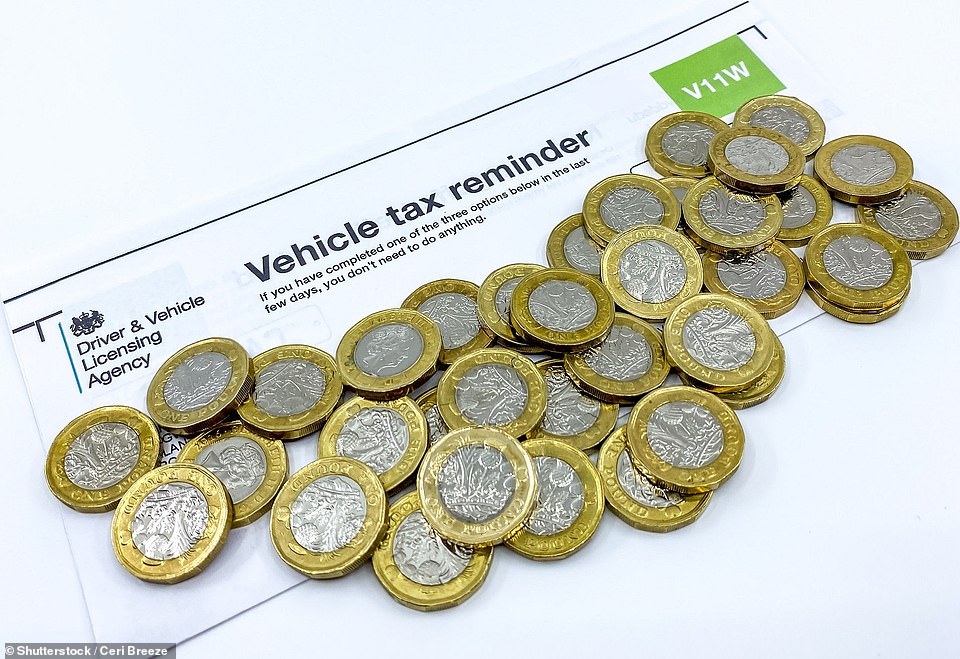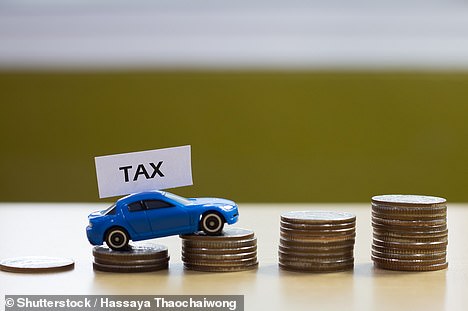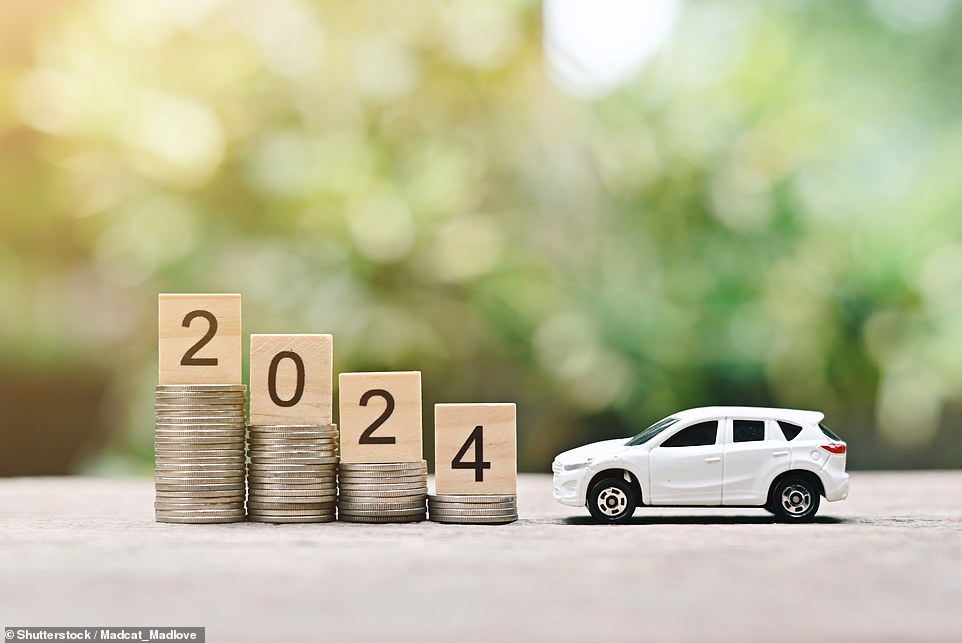Table of Contents
When Chancellor Jeremy Hunt announced in his spring budget statement last month that fuel duty would remain frozen for the fourteenth consecutive year – and that the 5p tax cut on petrol and diesel would remain in place for another twelve months – drivers and businesses breathed a sigh of relief.
But while the government has refrained from raising taxes on fuel, there is still an incentive for motorists that came into effect on April 1… Vehicle duty.
The VED – or car tax, as it is often called – remained under the radar in the Budget. Like most years, a rate increase in line with the consumer price index was hidden in the official document, meaning the cost of taxing a car is likely to rise for most motorists over the next twelve months.
What impact do the VED increases have on you? We’ve detailed all changes based on the age of the car you drive…

How will car tax increases affect you in 2024/25? Find out how much extra (if any) in vehicle duty you will pay for your motorcycle this year
I am buying a brand new car, registered after April 1, 2024
When motorists buy a new car, they face a first-year tax rate – known as a ‘showroom tax rate’ – based on the CO2 emissions of the vehicle they buy.
After this first year’s showroom tax, owners must pay a standard fixed-price tax rate (which you can find in the next section below).
The impact of the latest RPI increase has increased the VED for every car buyer, except those purchasing fully electric and plug-in hybrid vehicles that emit less than 50g/km of CO2.
And some of the increases drivers will experience are significant.
Buyers of the latest petrol and diesel cars with CO2 emissions of up to 150g/km can expect to pay between £5 and £35 more than before April 1.
Anyone buying a new engine with CO2 emissions above 150g/km will be forced to pay an extra £35 to £140, with the most polluting models hit with a showroom tax rate of £2,745 for the first year.
If you drive a diesel car that does not meet the Real Driving Emissions 2 (RDE2) standards for nitrogen oxide emissions, you will be charged a surcharge. You can check with the manufacturer of your car whether your car meets the RDE2 standard Government payment website will automatically identify this and charge you the additional costs.
| Emissions (g/km) CO2 | Petrol cars and diesel cars (TC49) that meet the RDE2 standard | Annual increase | All other diesel cars (TC49) | Annual increase | Alternative fuel cars (TC59) | Annual increase |
|---|---|---|---|---|---|---|
| 0 | £0 | £0 | £0 | £0 | £0 | £0 |
| 1-50 | £10 | £0 | £30 | £0 | £0 | £0 |
| 51-75 | £30 | £0 | £135 | £5 | £20 | £0 |
| 76-90 | £135 | £5 | £175 | £10 | £125 | £5 |
| 91-100 | £175 | £10 | £195 | £10 | £165 | £10 |
| 101-110 | £195 | £10 | £220 | £10 | £185 | £10 |
| 111-130 | £220 | £10 | £270 | £15 | £210 | £10 |
| 131-150 | £270 | £15 | £680 | £35 | £260 | £15 |
| 151-170 | £680 | £35 | £1,095 | £55 | £670 | £35 |
| 171-190 | £1,095 | £55 | £1,650 | £85 | £1,085 | £55 |
| 191-225 | £1,650 | £85 | £2,340 | £120 | £1,640 | £85 |
| 226-255 | £2,340 | £120 | £2,745 | £140 | £2,330 | £120 |
| More than 255 | £2,745 | £140 | £2,745 | £140 | £2,735 | £140 |
I REGISTERED A CAR BETWEEN APRIL 1, 2017 AND MARCH 31, 2024
If you own a car that was first registered between April 1, 2017 and March 31, 2024, the RPI increase will also translate into an increase in normal car tax, which is paid from the car’s second year onwards.
This has increased by £10, rising from £180 to £190 for petrol and diesel models and rising from £170 to £180 for alternative fuel vehicles (hybrids and plug-in hybrids).
The standard VED rate for zero-emission electric vehicles (EVs) purchased during this period will be scrapped, but EVs will be taxed from next onwards under the new rules proposed by Mr Hunt in 2022.


Motorists who spend more than £40,000 on a new car are saddled with extra premium tax which affects the amount of the VED, which is wages for the first five years at the standard rate. This year the cost of this premium tax has increased by £20.
In addition to the increase in the standard rate for vehicles with a combustion engine, there has also been an increase in the additional ‘premium’ tax rate on all models purchased after April 1, 2017.
This premium rate applies to all cars costing more than £40,000 new and is paid on top of the standard rate for five years (from year two to year six).
This premium tax was introduced in 2017 and has proven to be an unwanted blow to the wallets of motorists buying larger models, especially expensive SUVs.
And the cost of this ‘expensive car tax’ has risen by £20 per year from April 1, from £390 to £410.
Looking back at the previous VED rates for 2022/2023, premium tax was £355, meaning it has increased by £55 in two years.
It means that owners of 2018 petrol or diesel cars with a ‘list price’ (the published price before any discounts) of more than £40,000 will have to pay as much as £600 in standard rate tax this year, regardless of whether this is the case. produces little CO2 or extremely much carbon dioxide.
Hybrid owners get a discount of £10 per year, meaning owners of models costing £40,000 or more will pay £590 for the 2023/24 year.
Electric car owners are currently exempt from this premium tax for the time being, but this is unlikely to be the case from 2025, when owners of battery-powered vehicles will be forced to pay annual VED.
| Fuel type | Standard tax rate for cars costing less than £40,000 | Annual increase | Standard tax rate for cars costing more than £40,000 | Annual increase |
|---|---|---|---|---|
| Petrol or diesel | £190 | £10 | £600 | £30 |
| Alternative fuel (hybrid) | £180 | £10 | £590 | £30 |
| Electric | £0 | £0 | £0 | £0 |
| *models with a ‘list price’ (the published price before any discounts) over £40,000 must pay an additional premium tax of £390 for the first 5 years of the standard rate | ||||


From April 1, 2024, drivers of vehicles registered more than seven years ago can expect to pay an additional £10 to £40 per year in higher car tax
I HAVE A CAR REGISTERED BETWEEN MARCH 1, 2001 AND MARCH 31, 2017
For older petrol and diesel cars registered between March 2001 and March 2017, your vehicle will still be classified according to the VED bands with letters based on CO2 emissions.
The impact of the latest RPI increase from April 1 will affect all cars in this age category with CO2 emissions above 121 g/km CO2.
Annual VED costs will increase between £10 and £40.
It means the most polluting models with CO2 emissions above 255g/km will have to spend £735 annually in car tax.
| VED band | CO2 emissions (g/km) | Standard rate* for petrol and diesel cars | Annual increase | Standard rate* for alternative fuel vehicles | Annual increase |
|---|---|---|---|---|---|
| a | Up to 100 | £0 | £0 | £0 | £0 |
| b | 101-110 | £20 | £0 | £10 | £0 |
| c | 111-120 | £35 | £0 | £25 | £0 |
| D | 121-130 | £160 | £10 | £150 | £10 |
| E | 131-140 | £190 | £10 | £180 | £10 |
| F | 141-150 | £210 | £10 | £200 | £10 |
| G | 151-165 | £255 | £15 | £245 | £15 |
| H | 166-175 | £305 | £15 | £295 | £15 |
| I | 176-185 | £335 | £15 | £325 | £15 |
| J | 186-200 | £385 | £20 | £375 | £20 |
| K** | 201-225 | £415 | £20 | £405 | £20 |
| L | 226-255 | £710 | £35 | £700 | £35 |
| M | More than 255 | £735 | £40 | £725 | £40 |
| **Includes cars emitting more than 225 g/km and registered before March 23, 2006 | |||||
I HAVE A CAR REGISTERED BEFORE MARCH 1, 2001
If you own a car that is older than 23 years (registered before March 1, 2001), you will also have to pay more motor vehicle tax this year.
VED for cars of this age is split into only two groups based on engine size: up to 1.55 liters and over 1.55 liters.
For those in the lower group the increase is £10 per year, from £200 to £210. For the larger engine capacities, ministers have imposed a £20 increase, from £325 to £345 from April 1, 2024.
| Motor size | Standard rate* for petrol and diesel cars | Annual increase |
|---|---|---|
| Up to 1549cc | £210 | £10 |
| More than 1549cc | £345 | £20 |
I HAVE A CAR MORE THAN 40 YEARS OLD
According to the VED rules, any car registered more than 40 years ago is no longer subject to motor vehicle tax.
This means that all cars registered before April 1984 are now eligible for the exemption from the ‘historical motor vehicle tax’.
However, it is important to note that it is a vehicle owner’s responsibility to apply to the DVLA for a car tax exemption so that they can issue an updated logbook to clarify that the car qualifies for free historic car tax.
You can find out how Apply for historic vehicle tax on the Gov.uk site.
Some links in this article may be affiliate links. If you click on it, we may earn a small commission. That helps us fund This Is Money and keep it free to use. We do not write articles to promote products. We do not allow a commercial relationship to compromise our editorial independence.
